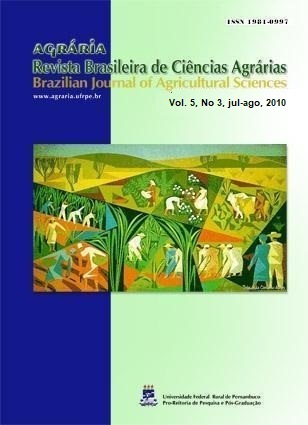Maize yield in response to <i>Herbaspirillum seropedicae</i> inoculation under different nitrogen levels
DOI:
https://doi.org/10.5039/agraria.v5i3a898Keywords:
Nitrogen fertilization, diazotrophic bacteria, nitrogen biological fixation, plant growth promotion, Zea maysAbstract
The research on diazotrophic bacteria in maize has shown the need to associate effective bacteria to promising genotypes, which would benefit from this association. Thus, an experiment was conducted under field conditions in the municipality of Marechal Cândido Rondon-PR, Brazil, aiming at evaluating the performance of two maize hybrids with Herbaspirillum seropedicae inoculation under different nitrogen levels. The study was carried out in experimental design of randomized blocks in factorial 2 x 2 x 3 with five replications. The treatments consisted of two hybrids (AS 1540 and AS 1560); presence or absence of inoculation with H. seropedicae , and three levels of nitrogen in covering (0, 40 and 80 kg ha-1). The data obtained showed that H. seropedicae inoculation did not significantly influenced the productivity of the two tested maize hybrids; however, it is observed that the hybrid AS 1570 responded positively to inoculation with an 8.6% increase in grain production, and hybrid AS 1540 was negatively impacted by a yield reduction of 5.1%, showing that the hybrids tested had different responses to H. seropedicae inoculation. The doses of N applied in covering significantly influenced most of the variables.



